By Cisco SVP and Chief Government Strategy Officer Jeff Campbell
As governments explore the impact of artificial intelligence (AI), they are thinking about how to prevent an AI wild west where anything goes, while still enabling an AI gold rush that keeps their economy competitive.
At the heart of that balance are regulations that promote responsible, safe, secure, and ethical AI, but these are just one aspect of a rapidly changing digital frontier. When it comes to regulating AI, lawmakers must consider a holistic approach that includes policies to foster research and development (R&D) and ensure the workforce is equipped with 21st-century digital skills to navigate the proliferation of AI.
R&D is the lifeblood of a country’s competitiveness: It fuels innovation and drives the development of new technologies, products, and services that give nations a competitive edge. R&D can attract top talent and better secure a country’s position in the global economy. While AI can address some of our most complex global challenges, we have yet to scratch the surface of harnessing the full potential of its applications. R&D will be key to unlocking that power.
To be successful, governments will have to do their part in energizing the R&D ecosystem. Increased public funding for AI R&D—particularly public-private partnerships such as the US National Artificial Intelligence Research Resource—will play a crucial role. It will also be critical to facilitate global cooperation between countries to identify and support R&D challenges across borders.
Governments must also reflect on policies that can revitalize R&D. One issue that is hindering R&D in the US is related to taxes and expensing. Up until 2022, US companies could deduct R&D expenses in the year that they were incurred. But that policy has since expired, and such expenses must now be capitalized and amortized over five years—a cash tax cost that totaled $40 billion in 2022 alone.
The pitfalls of this policy expiration are already being felt. After growing at 6.6 percent on average over the previous five years, R&D spending has declined over the last 12 months. In addition to disincentivizing US-based innovation, the US is now one of only two developed countries with R&D amortization. Meanwhile, other countries allow for immediate deductions, and some governments—like China—are greatly expanding deductions for R&D expenses.
The US House of Representatives has passed legislation that would restore the deductibility of domestic R&D expenses, but the Senate has yet to act. If the US wants to ensure its global leadership on AI innovation and maintain its economic competitiveness, it will be pivotal to quickly enact an R&D amortization fix.
The world also needs skilled workers to power the next great chapter of AI: AI is accelerating the pace of change for the global workforce, presenting powerful opportunities for the development of new jobs and roles. Workers need access to training programs, and businesses need to connect with skilled workers. Leaders in industry, government, and academia must work together to understand the AI and digital skills that will be most in-demand as well as invest in upskilling and reskilling initiatives.
Developing the AI workforce also involves enabling the development of STEM skills without necessarily requiring university-level or advanced degrees. Apprenticeships, partnerships with community colleges, digital skills training and certifications, and public service opportunities are among the important gateways to helping new and mid-career workers develop in-demand skills.
AI also requires outside-the-box thinking and collaboration across the private and public sectors. For example, Cisco recently launched the AI-Enabled Information and Communication Technology (ICT) Workforce Consortium. Led by Cisco and joined by Accenture, Eightfold, Google, IBM, Indeed, Intel, Microsoft, and SAP, the consortium is focused on upskilling and reskilling roles most likely to be impacted by AI. The effort was catalyzed by the US-EU Trade and Technology Council Talent for Growth Task Force, and the goal is to explore AI’s impact on ICT job roles, enable workers to find and access relevant training programs, and connect businesses to skilled and job-ready workers.
The combination of private sector leadership and public policies that prioritize digital skills training and invest in future generations of STEM leaders will ensure the world can deploy AI—whether it’s to enhance productivity, enable sustainability, improve government services, or tip the cybersecurity balance in favor of the individuals defending our networks.
The future of AI hinges on R&D investment and the cultivation of digital skills: Embracing these imperatives will not only drive innovation and economic growth but also empower individuals and societies to grasp the transformative potential of AI responsibly and inclusively.
 About the author:
About the author:
Jeff Campbell is the Senior Vice President and Chief Government Strategy Officer at Cisco. He leads Cisco’s government relations worldwide, including managing a team that spans six continents. He advances issues that support Cisco’s robust corporate and technology policy agenda.

